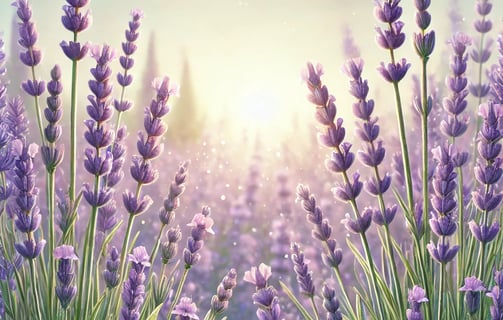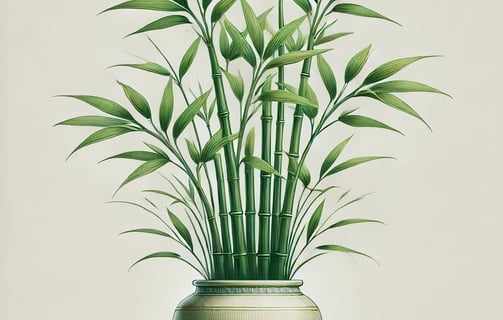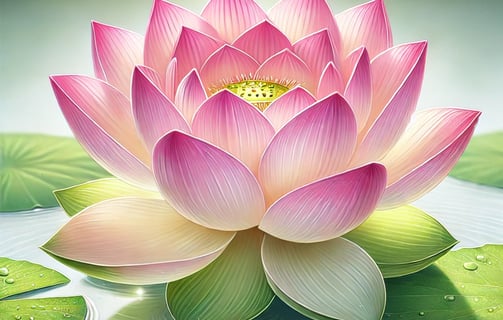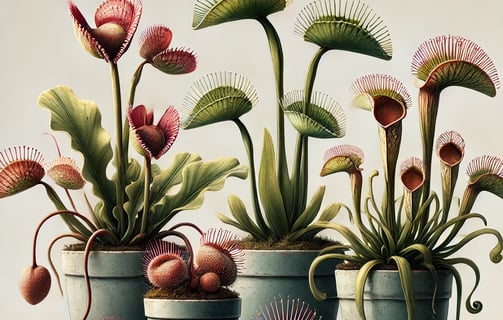The 10 Most Famous Plants in the World and How to Care for Them
2/8/202514 min read
From ancient mythologies to modern-day gardens, certain plants have captured human admiration for centuries. Some dazzle us with vibrant blooms, others amaze with unique shapes or healing properties, and still others embody cultural traditions that span continents. If you’re looking to cultivate these legendary plants, you’ll need a solid understanding of their needs—whether that’s abundant sunlight, acidic soil, or careful pruning.
In this post, we explore Roses, Orchids, Tulips, Sunflowers, Lavender, Bonsai, Bamboo, Cacti, Lotus, and Carnivorous Plants. These species are household names around the globe, cherished for their beauty, symbolism, or historical importance. We’ll cover everything from the basics of planting and watering to more nuanced aspects of temperature, soil preferences, and common issues. Let’s dive in!
Part I: General Plant Care Principles
Before we delve into each individual species, it’s helpful to establish some general guidelines for plant care. Although every plant has its unique quirks, a few core principles will apply across the board:
Soil Quality
Good soil is the foundation of a plant’s health. Most plants prefer well-draining soil that holds some moisture yet doesn’t remain soggy.
Amend your soil with organic matter (compost, well-rotted manure) to enhance nutrient content and improve structure.
Watering Practices
Overwatering is one of the most common reasons plants fail. Always check soil moisture before watering.
Remember that factors like season, climate, and container type (if you’re growing in pots) can influence how much and how often you should water.
Sunlight and Position
Most flowering plants need ample light, though specifics vary by species.
Monitor how the sun travels across your garden or home. Even slight changes in sun position can affect your plants’ growth.
Fertilization
Nutrient requirements differ among species. Generally, balanced fertilizers (like a 10-10-10 NPK) or specialized blends (e.g., orchid fertilizer) can give plants a boost.
Over-fertilizing can harm your plants, so follow label instructions closely.
Pest and Disease Management
Healthy plants are less susceptible to pests and diseases, so good cultural care is your first line of defense.
Common pests like aphids, spider mites, or mealybugs can be managed with gentle insecticidal soaps or neem oil.
With these fundamentals in mind, let’s turn to our spotlight: the ten most famous plants worldwide, each with its own unique story and care needs.
1. Roses




















Background and Significance
Few plants capture the human imagination like Roses (genus Rosa). For millennia, roses have symbolized love, beauty, and passion, making them a staple in poetry, art, and gardens across countless cultures. With thousands of cultivars available, roses boast an incredible diversity of colors, forms, and fragrances.
How to Care for Roses
Sunlight
Roses thrive with 6 to 8 hours of direct sunlight daily. Adequate light is crucial for abundant blooms and healthy foliage.
Soil and Planting
Slightly acidic soil (pH around 6.0 to 6.5) rich in organic matter is ideal.
Ensure good drainage. If your garden soil is heavy clay, consider raised beds or work in ample compost to improve structure.
Watering
Roses like consistent moisture, especially during their growing and blooming phases. Deep watering (once or twice a week) is preferable to frequent, shallow watering.
Soak the roots, avoiding overhead watering that can encourage fungal diseases on leaves.
Fertilization
A balanced, rose-specific fertilizer applied in spring and midsummer supports vigorous growth and multiple bloom cycles.
Avoid fertilizing late in the season, as new growth may be damaged by frost.
Pruning
Prune in late winter or early spring (before new growth) to remove dead or diseased wood and shape the plant.
Cutting back older canes encourages new, healthier shoots and better airflow.
Common Problems
Aphids and black spot (a fungal disease) are common issues. Inspect leaves regularly, and remove infected foliage.
Promote good air circulation around your plants and avoid wetting leaves to minimize fungal infections.
Why They’re Famous: Roses have reigned as the quintessential flower of romance and elegance across civilizations—no floral arrangement or formal garden would feel complete without them.
2. Orchids
Background and Significance
With over 28,000 recognized species, Orchids (family Orchidaceae) form one of the largest and most diverse plant families on Earth. Prized for their intricate and often exotic-looking blooms, orchids have been a symbol of luxury, love, and refinement in many cultures. They’re famously seen in tropical rainforests, although some varieties can thrive indoors as houseplants.
How to Care for Orchids
Light
Many popular orchids (like Phalaenopsis or Moth Orchids) prefer bright, indirect light. Direct harsh sunlight can scorch their delicate leaves.
An east-facing window with gentle morning sun is often perfect.
Water and Humidity
Orchids have specialized roots that need oxygen. Overwatering is a major threat. Soak once a week or so, letting excess water drain away completely.
Aim for moderate to high humidity (50–70% if possible). Misting leaves, placing a humidity tray nearby, or using a humidifier can help.
Soil and Medium
Orchids aren’t typically grown in regular potting soil. Instead, use a bark-based orchid mix with materials like perlite or sphagnum moss. This ensures excellent drainage and allows roots to breathe.
Temperature
Most orchids prefer daytime temperatures of around 70–80°F (21–26°C) and a slight drop at night.
Avoid placing them near drafts, air conditioners, or heaters.
Fertilizing
Use a balanced orchid fertilizer (like 20-20-20) at half-strength. Feed lightly every couple of weeks during the growing season.
Reblooming
After the flowers fade, cut the flower spike back to a node, which may produce a new shoot. Patience is key; some orchids take months to rebloom.
Why They’re Famous: Orchids are synonymous with elegance and mystery, revered for their unique shapes and patterns. They’ve been cultivated for centuries in Asia and Europe, gracing greenhouses and homes with their exotic flair.
3. Tulips
Background and Significance
Originating from Central Asia, Tulips (genus Tulipa) exploded in popularity in the 17th century during the infamous “Tulip Mania” in the Netherlands. Today, they remain a hallmark of springtime in many parts of the world, known for their brilliant, cup-shaped blooms in an endless array of colors.
How to Care for Tulips
Planting Bulbs
Tulips grow from bulbs, typically planted in the fall before the ground freezes.
Choose a sunny spot and plant bulbs about 6-8 inches deep, pointy end up.
Soil Requirements
A well-draining, sandy loam is ideal. Waterlogged soil can cause bulb rot.
Slightly acidic to neutral pH levels (around 6.0 to 7.0) are suitable.
Watering
After planting, water the bulbs thoroughly. During spring, natural rainfall often suffices.
Avoid overwatering; too much moisture leads to rotting bulbs or fungal issues.
Sunlight and Temperature
Tulips need full sun (at least 6 hours) for robust blooms.
They require a period of cold dormancy (35–50°F or ~2–10°C) for around 12-16 weeks to trigger flowering, which is why they’re planted in autumn in cooler climates.
Post-Flowering Care
Once blooms fade, allow the foliage to die back naturally. This enables the bulb to store energy for the next season.
You can remove the spent flower head to prevent seed formation, ensuring more energy goes back into the bulb.
Pests and Issues
Bulbs can attract rodents who dig them up. Cover with wire mesh or use deterrents if this is a problem.
Fungal diseases (like Botrytis) can be minimized by avoiding overhead watering.
Why They’re Famous: The Dutch Golden Age saw tulips become so valuable that single bulbs sold for fortunes. Today, the Netherlands remains synonymous with tulips, hosting vast fields that draw millions of tourists each spring.
4. Sunflowers
Background and Significance
Sunflowers (Helianthus annuus) are instantly recognizable by their giant, bright yellow heads and tall, sturdy stems. Cultivated for their seeds (a source of oil and nutrition) and ornamental beauty, sunflowers have become a universal symbol of optimism, warmth, and longevity. Their name derives from their tendency to turn their faces toward the sun—a phenomenon known as heliotropism.
How to Care for Sunflowers
Sunlight
True to their name, sunflowers crave full sun. Aim for 6–8 hours of direct sunlight daily to achieve tall, sturdy growth.
Inadequate light can result in spindly, weaker stems.
Soil and Planting
Sow seeds directly outdoors in warm, well-draining soil once the risk of frost has passed.
Sunflowers do best in slightly acidic to slightly alkaline soil (pH 6.0–7.5).
Watering
Regular watering is crucial during germination and early growth. Keep the soil moist (but not saturated).
Once established, sunflowers are somewhat drought-tolerant, but consistent moisture will yield bigger blooms.
Fertilization
A balanced fertilizer can help maximize height and flower size. However, too much nitrogen can lead to lush foliage at the expense of blooms.
Support
Tall sunflower varieties might require staking or support, especially in windy areas.
Space plants properly (12–24 inches apart) to allow plenty of room for growth.
Pest Management
Birds and squirrels love sunflower seeds. Use netting if you plan to harvest.
Watch for fungal diseases in humid climates; good airflow and sunlight can reduce issues.
Why They’re Famous: Sunflowers’ bright, cheerful faces and nutritional seeds have made them staples in agriculture and horticulture around the world. Additionally, artists like Vincent van Gogh immortalized sunflowers in timeless paintings, solidifying their status as cultural icons.
5. Lavender
Background and Significance
With a soothing scent that instantly calls to mind images of Provence’s rolling purple fields, Lavender (Lavandula) has been cherished for centuries for its fragrance, medicinal properties, and ornamental appeal. Its origins trace back to the Mediterranean region, but many cultivars can adapt to different climates.
How to Care for Lavender
Sunlight
Lavender thrives under full sun (6 or more hours daily). This ensures robust growth and maximizes the essential oil content in the leaves and flowers.
Soil Type
Sharp drainage is crucial. A sandy or gritty soil with a slightly alkaline pH (7.0–7.5) is ideal.
Heavy clay soils often cause root rot unless you amend them thoroughly with grit or plant lavender in raised beds.
Watering
Drought-tolerant once established, lavender prefers to dry out between waterings. Overwatering is a common pitfall.
Water young plants regularly until they take root, then reduce frequency.
Pruning
Prune lavender back each year after flowering to maintain shape, encourage bushier growth, and prevent woodiness.
Avoid cutting into the woody base, as it might not regenerate well.
Uses and Harvesting
Harvest flowers when buds are just opening for maximum fragrance. They can be dried for sachets or culinary uses.
Use lavender essential oil or dried bundles for calming aromatherapy.
Pests and Disease
Generally pest-resistant, lavender may occasionally face fungal issues if grown in overly damp conditions.
Why They’re Famous: Lavender’s legendary fragrance has made it a staple in perfumes, soaps, and skincare products worldwide. Its calming properties are also celebrated in herbal medicine and aromatherapy.
6. Bonsai
Background and Significance
Not a single plant species but rather an art form, Bonsai involves cultivating and shaping miniature trees in containers. Originating in China and later refined in Japan, bonsai exemplifies patience, craftsmanship, and a deep bond between the grower and the tree. Common species used for bonsai include junipers, maples, ficus, and pines.
How to Care for Bonsai
Species-Specific Needs
Bonsai is a technique, not a single plant. Care requirements depend on the tree species you’re miniaturizing.
Most bonsai trees do best outdoors, though some tropical species (e.g., Ficus) can adapt to indoor life.
Soil and Containers
Bonsai soil is typically fast-draining, often composed of akadama (a type of Japanese clay), pumice, and lava rock.
Shallow bonsai containers restrict root growth, aiding in maintaining a miniature form.
Pruning and Shaping
Regular trimming of branches and roots is essential.
Techniques like wiring branches, defoliation, and careful potting create the desired shape and scale.
Watering
Because bonsai trees are in shallow pots, they can dry out quickly. Check soil moisture daily.
Avoid waterlogging; the free-draining mix helps, but you must ensure you don’t let the roots completely dry out.
Fertilization
Frequent, balanced feeding is necessary, as the limited soil volume can’t store many nutrients.
Fertilize lightly but consistently throughout the growing season.
Patience and Artistry
Bonsai is about cultivating both the tree and your own sense of artistry. Shaping a bonsai can take years or even decades.
Why They’re Famous: The bonsai tradition is revered for its blend of horticulture and fine art, symbolizing harmony, balance, and a profound respect for nature.
7. Bamboo
Background and Significance
Bamboo is a fast-growing grass that’s been used for thousands of years in construction, crafts, and cuisine, especially in Asia. Revered in many Eastern cultures for its resilience, humility, and flexibility, bamboo also gained popularity worldwide as an ornamental plant and privacy screen.
How to Care for Bamboo
Species Selection
Bamboos vary widely; some are giant timber bamboos that soar dozens of feet high, while others are dwarf ornamental varieties.
“Lucky Bamboo” (Dracaena sanderiana) is not a true bamboo but a popular houseplant; its care is different from real bamboo species.
Sunlight and Position
Most bamboos flourish in full to partial sun.
A few species tolerate shade, so research the variety you have.
Soil and Watering
Bamboo prefers moist, well-draining soil. Keep the root zone consistently damp, especially during establishment.
Once mature, many bamboos are fairly drought-tolerant but still appreciate periodic watering in dry spells.
Container Growth
Bamboo can be invasive due to its vigorous rhizomes, so using containers or root barriers can help control spread.
If grown in pots, fertilize regularly and repot as bamboo can quickly become root-bound.
Fertilization
A nitrogen-rich fertilizer supports leafy growth. Applying mulch around the base helps retain moisture and adds nutrients.
Running vs. Clumping Types
Running bamboo spreads aggressively through horizontal rhizomes. It’s best contained with barriers.
Clumping bamboo expands more slowly in tight clusters, making it easier to manage in small gardens.
Why They’re Famous: Bamboo’s rapid growth, strength, and versatility have made it a symbol of prosperity and a key resource for centuries—used in everything from paper to scaffolding in modern construction.
8. Cacti
Background and Significance
Cacti (family Cactaceae) are desert dwellers recognized for their thick, water-storing stems and spines. They represent endurance, adaptation, and resilience. From the iconic Saguaro in the American Southwest to small ornamental varieties on windowsills, cacti fascinate people for their unique shapes and striking, if often short-lived, blooms.
How to Care for Cacti
Light
Most cacti thrive under bright, direct sunlight. Place them in the sunniest spot possible, such as a south-facing window if growing indoors.
Watering
Infrequent but thorough watering is key. Soak the soil, then let it dry completely before watering again. Overwatering is the most common killer of cacti.
In winter, many cacti go semi-dormant and need very little water.
Soil
Use a cactus mix containing sand or perlite for extra drainage.
Good aeration around roots is crucial to avoid rot.
Temperature
Most cacti can tolerate a broad range of temperatures but generally prefer warmth (65–85°F or ~18–29°C). Some species can handle near-freezing nights in their natural habitat, though indoor growers rarely replicate that.
Fertilizing
A low-nitrogen fertilizer (such as a 2-7-7 blend) during the growing season is sufficient. Overfertilizing promotes weak, elongated growth.
Common Pests and Problems
Mealybugs and spider mites can attack cacti if conditions are overly humid. Maintain good airflow.
Rot develops quickly if the soil stays wet.
Why They’re Famous: Cacti epitomize survival in harsh environments and have a unique aesthetic that appeals to collectors. Their slow growth, spines, and rare but brilliant flowers set them apart from other plants.
9. Lotus
Background and Significance
Lotus (Nelumbo nucifera) is an aquatic plant of profound cultural and spiritual importance in Asia, especially in Buddhist and Hindu traditions. Renowned for its large, elegant flowers rising from muddy waters, the lotus symbolizes purity, enlightenment, and rebirth. It’s often seen in ponds, water gardens, or ornamental containers.
How to Care for Lotus
Planting
Lotus grows from rhizomes. Plant them in a wide, shallow container filled with heavy clay soil or aquatic potting mix.
Submerge the container in a pond or water feature, ensuring the top of the soil is a few inches below the water’s surface.
Sunlight
Lotus requires full sun—at least 6 hours of direct light—for robust growth and abundant blooms.
Temperature
Warmth is crucial. Lotus thrives in water temperatures above 70°F (21°C).
In colder climates, lotus may go dormant. Protect the rhizomes from freezing by submerging them deeper or moving them to a frost-free location.
Fertilization
Use slow-release aquatic fertilizers specifically formulated for water plants. Apply during the growing season, but stop when the plant starts to go dormant.
Water Quality
Clear, still water is ideal. Lotuses don’t appreciate strong water currents or filters that disturb their containers.
Algae growth can be an issue in high-nutrient or still waters, though healthy lotus foliage usually shades out much algae.
Maintenance
Remove yellowed leaves and spent flowers to keep the water clean and deter rot.
Thin out crowded containers every few years to rejuvenate growth.
Why They’re Famous: Beyond their aesthetic appeal, lotuses hold deep spiritual significance in various Eastern cultures, symbolizing the emergence of beauty and purity from muddy waters.
10. Carnivorous Plants
Background and Significance
Carnivorous plants such as the Venus Flytrap (Dionaea muscipula), Pitcher Plants (Sarracenia, Nepenthes), and Sundews (Drosera) captivate plant lovers with their unusual feeding mechanisms. Evolving in nutrient-poor soils, these plants trap insects to supplement their diets, showcasing a fascinating adaptation in the plant kingdom.
How to Care for Carnivorous Plants
Light
Most carnivorous plants need plenty of bright light or partial direct sun. For example, Venus Flytraps and Sarracenias love sunny spots.
Insufficient light leads to weak growth and fewer traps.
Water and Soil
Use distilled or rainwater only. Tap water’s minerals can harm them over time.
The soil must be nutrient-poor—a 50:50 mix of peat moss and perlite (or sand) is standard. Fertilizing can be detrimental.
Humidity
Many carnivorous plants hail from boggy, humid habitats. A terrarium or tray of water (for Sarracenia) can help maintain moisture.
Venus Flytraps don’t require extremely high humidity but still need consistently damp (not soaking) soil.
Feeding
Avoid the temptation to overfeed them with insects. They can catch their own prey if placed outdoors. Indoors, occasional feeding of live or freeze-dried insects is enough.
Never feed them human food (meat, cheese), as this can rot in the trap and kill the leaf.
Dormancy
Venus Flytraps and some pitcher plants require a cool winter dormancy to maintain long-term health. They may appear to die back; reduce watering and keep them in a cooler spot (around 35–50°F / 2–10°C) for a few months.
Common Pitfalls
Using regular potting soil or water with minerals can quickly kill carnivorous plants.
Triggering traps (Venus Flytrap) for fun stresses the plant and wastes energy.
Why They’re Famous: No other group of plants captures the imagination quite like carnivores. Their insect-trapping abilities and surreal forms have made them stars of documentaries, science fiction, and botanical gardens worldwide.
Part III: Putting It All Together
Whether you’re drawn to the classical elegance of a rose garden or the Zen-like artistry of bonsai trees, each of these ten famous plants offers a rich tapestry of history, symbolism, and horticultural challenges. Here’s how to integrate them into your gardening journey more seamlessly:
Match Plant to Environment
A water-loving lotus won’t do well in a dry indoor environment, just as a sun-loving cactus might wither in a dark bedroom. Evaluate your available space, climate, and time commitment before selecting a new plant.
Embrace Their Uniqueness
Each species has distinct care guidelines, from the seasonal dormancy of tulips and carnivorous plants to the bark-based substrate required by orchids. Adapting to these special needs can be deeply rewarding.
Learn Through Observation
Plants communicate through their leaves, growth patterns, and overall vigor. Watch for signs of stress—yellowing foliage, slowed growth, or unusual spots. Early intervention often makes a huge difference.
Combine Beauty and Practicality
If you have limited space, pick plants that serve multiple functions—like lavender for both fragrance and pollinator attraction, or sunflowers for ornamental beauty and edible seeds.
Curiosity and Research
The world of gardening is vast. A little extra research into your plant’s origins can reveal surprising tips. For instance, knowing that many orchids grow epiphytically in rainforest canopies helps you replicate their airy root conditions at home.
Growing the world’s most famous plants connects you to centuries of history, cultural traditions, and the wonder of nature’s biodiversity. From regal roses to mysterious carnivorous species, each plant invites you to experience a different facet of horticulture. While the learning curve can be steep—particularly with specialized species like orchids or bonsai—the rewards are immeasurable: vibrant blooms, enticing scents, or simply the daily joy of watching something grow under your care.
Quick Recap:
Roses demand sunlight, rich soil, and diligent pruning for show-stopping blooms.
Orchids call for bark-based mixes, moderate watering, and patience for reblooming.
Tulips need a cold dormant period and well-draining soil for stunning spring displays.
Sunflowers symbolize cheerfulness and require abundant sun and steady moisture.
Lavender craves full sun, well-drained soil, and minimal watering once established.
Bonsai is an art form that hinges on precise pruning, specialized soil, and relentless attention.
Bamboo can be invasive but offers striking visual impact if properly contained and watered.
Cacti stand for resilience, preferring full sun and infrequent watering in sandy, fast-draining soil.
Lotus flourishes in warm, still waters and full sun, symbolizing purity and rebirth.
Carnivorous Plants captivate with their insect-trapping adaptations but need low-nutrient soil and pure water to survive.
As you embark on cultivating these iconic plants, remember that gardening is a never-ending process of trial, observation, and gentle care. By tailoring your efforts to each species’ particular needs, you’ll not only grow extraordinary plants but also develop a deeper appreciation for the intricate dance between flora, environment, and the human touch. May your roses bloom generously, your orchids rebloom, and your sunflowers always turn cheerfully to the light!
Inspiration
Explore ideas for your home and garden.
© 2025. All rights reserved.
